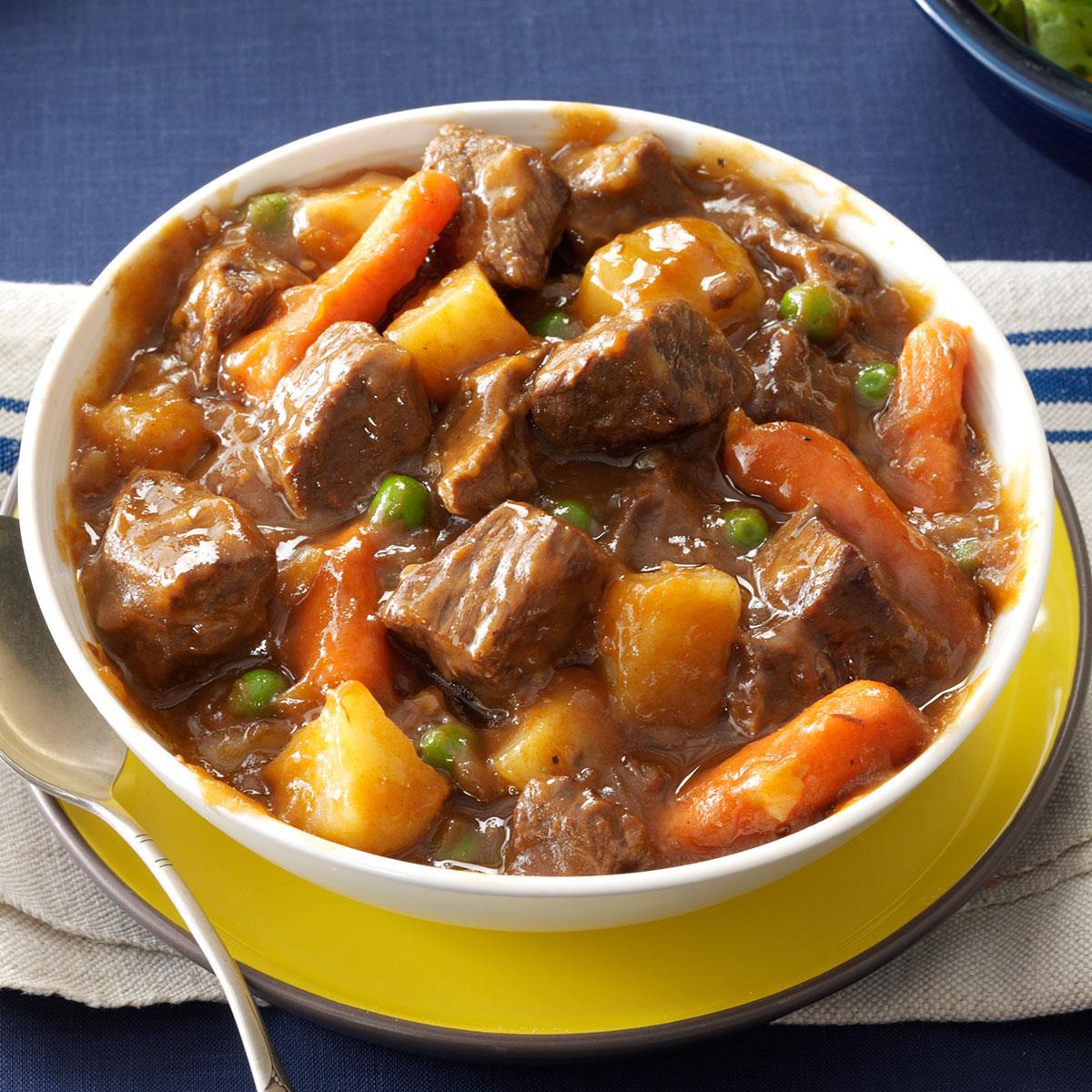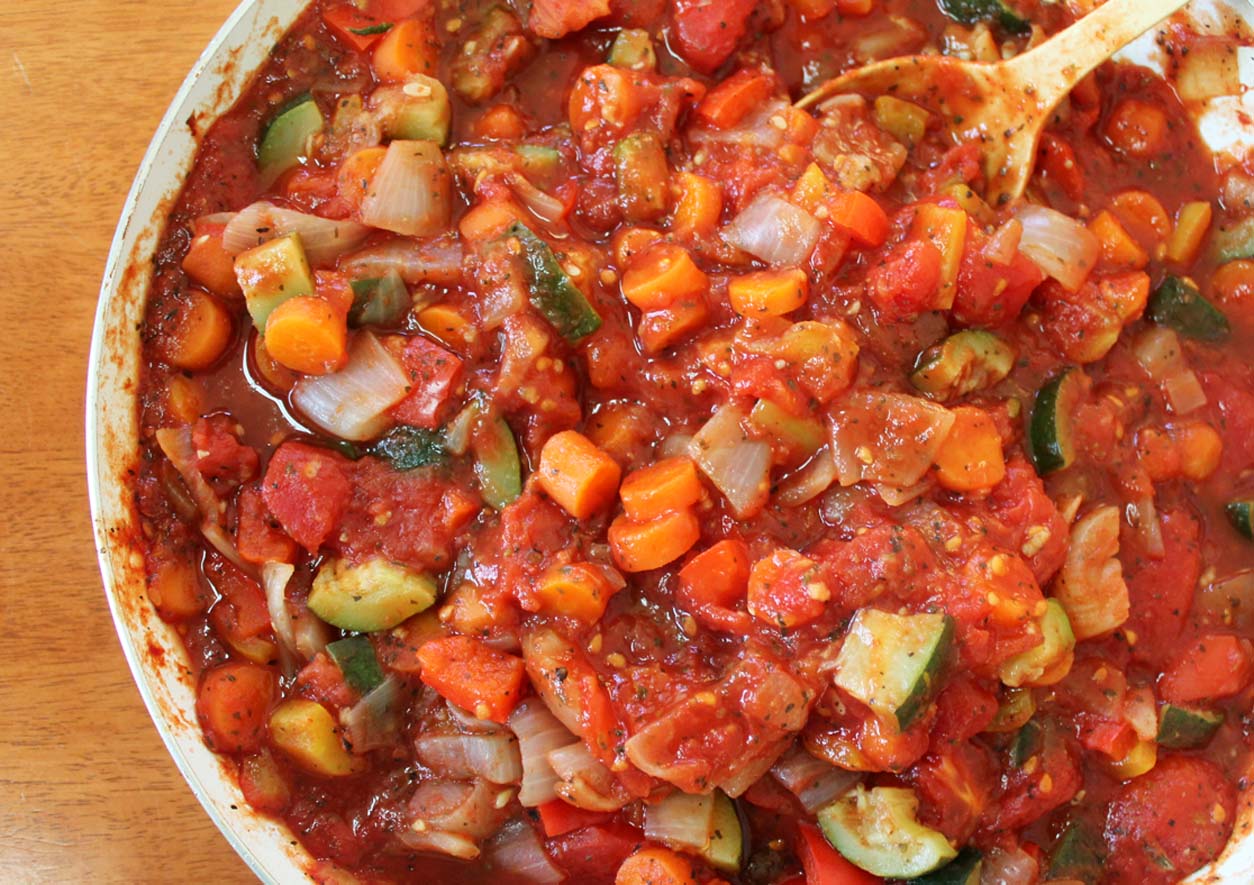Home>Gardening News and Trends>Latest News>What Vegetables Go In A Stew


Latest News
What Vegetables Go In A Stew
Modified: January 22, 2024
Discover the latest news on what vegetables go in a stew. Learn which veggies add a burst of flavor and nutrients to your hearty dish.
(Many of the links in this article redirect to a specific reviewed product. Your purchase of these products through affiliate links helps to generate commission for Chicagolandgardening.com, at no extra cost. Learn more)
Table of Contents
Introduction
When it comes to making a delicious and hearty stew, choosing the right vegetables is key. A well-crafted stew not only brings warmth and comfort, but it also offers a plethora of nutritious ingredients. From root vegetables to leafy greens, a variety of vegetables can be incorporated to create a colorful and flavorful stew.
In this article, we will explore the different types of vegetables that can be used in a stew. Whether you’re a seasoned chef or a culinary novice, this guide will help you select the perfect vegetables to elevate your stew to new heights.
Stews are known for their versatility, allowing you to use a wide range of vegetables depending on your taste preferences and dietary needs. From hearty root vegetables to delicate leafy greens, each vegetable adds its own unique flavor, texture, and nutritional benefits.
Let’s dive into the world of vegetables and discover which ones are the best fit for your next stew creation.
Common Vegetables for Stews
Stews are a great way to incorporate a variety of vegetables, making them not only delicious but also packed with vitamins, minerals, and fiber. Here are some commonly used vegetables in stews:
- Carrots: Carrots are a classic choice for stews. They add a subtle sweetness and a vibrant orange color. Carrots are also rich in beta-carotene, which is converted into vitamin A in the body, promoting good vision and a healthy immune system.
- Celery: Celery contributes a refreshing and crunchy texture to stews. It also adds a delightful earthy flavor. Celery is packed with antioxidants and is a good source of vitamin K and potassium, which are essential for maintaining healthy bones and a balanced blood pressure.
- Potatoes: Potatoes are a staple in many stews, providing a hearty and filling element. They can be diced or cubed to add thickness and substance to the stew. Potatoes are an excellent source of energy, as they are high in carbohydrates, and they are also rich in vitamin C and potassium.
- Onions: Onions are an essential ingredient in stews, adding a savory and aromatic base. They come in various types, such as yellow, red, and white, each with its own flavor intensity. Onions are a good source of vitamin C and contain compounds that have anti-inflammatory and immune-boosting properties.
- Garlic: Garlic is often paired with onions in stews, contributing a distinct flavor and aroma. It is believed to have numerous health benefits, including boosting the immune system and lowering blood pressure. Garlic is also packed with antioxidants.
- Parsnips: Parsnips are similar to carrots but have a slightly sweeter and nuttier flavor. They add a delicious depth to stews, especially when roasted. Parsnips are an excellent source of dietary fiber, folate, and vitamin C.
These are just a few examples of the many vegetables that can elevate your stew to a whole new level. Feel free to experiment with different combinations of vegetables to create your own unique flavor profile. The key is to select vegetables that complement each other and enhance the overall taste and texture of the stew.
Root Vegetables
Root vegetables are a versatile and essential component of any hearty stew. These vegetables, as the name suggests, grow underground and have a rich and earthy flavor. They add depth, texture, and a hint of sweetness to stews. Here are some popular root vegetables used in stews:
- Carrots: Carrots are a staple root vegetable in stews. They add a natural sweetness and vibrant color to the dish. Carrots are high in beta-carotene, which is converted to vitamin A in the body, promoting healthy vision and supporting the immune system.
- Potatoes: Potatoes are a versatile root vegetable that can be found in a variety of stews. They provide a comforting and filling element to the dish. Potatoes can be diced, cubed, or mashed to add thickness and substance. They are a great source of carbohydrates, vitamin C, and potassium.
- Turnips: Turnips have a slightly peppery and earthy flavor and are often used in stews for their unique taste. They can be boiled, roasted, or sautéed to add a different dimension to the dish. Turnips are rich in antioxidants and are a good source of fiber and vitamin C.
- Radishes: Radishes are known for their crunchy texture and peppery taste. While they are commonly seen in salads, they can also be added to stews for a refreshing and zesty kick. Radishes are low in calories and packed with vitamin C and fiber.
- Parsnips: Parsnips have a sweet and nutty flavor, similar to carrots. They are often added to stews for their unique taste and texture. Parsnips are a great source of dietary fiber, folate, and vitamin C.
Root vegetables bring depth and heartiness to stews, making them a comforting and satisfying meal. They are not only delicious but also offer a range of nutrients, including vitamins, minerals, and dietary fiber. Experiment with different combinations of root vegetables to create a stew that suits your taste preferences and dietary needs.
Leafy Greens
Leafy greens are not only nutritious but also add a vibrant and fresh element to stews. They bring a burst of color and a subtle bitterness that complements the other flavors in the dish. Here are some popular leafy greens used in stews:
- Kale: Kale is a nutrient-dense leafy green that is often used in stews. It has a robust texture and a slightly bitter taste. Kale is packed with vitamins A, C, and K, as well as antioxidants that support overall health.
- Spinach: Spinach is a versatile leafy green that can be added to stews for its mild and slightly sweet flavor. It wilts down quickly and provides a rich source of iron, folate, and vitamins A and C.
- Cabbage: Cabbage is a cruciferous vegetable that adds a satisfying crunch to stews. It has a mild and slightly sweet taste. Cabbage is rich in fiber, vitamin C, and antioxidants that promote digestive health and boost the immune system.
- Swiss Chard: Swiss chard has colorful stems and dark green leaves that add visual appeal to stews. It has a slightly bitter taste that becomes milder when cooked. Swiss chard provides a good source of vitamins A, C, and K, as well as minerals like magnesium and potassium.
- Collard Greens: Collard greens are robust and hearty, ideal for long-cooking stews. They have a slightly bitter and earthy flavor. Collard greens are an excellent source of vitamin K, vitamin A, and fiber.
Leafy greens not only add texture and flavor to stews but also offer a wide array of nutrients. They are packed with vitamins, minerals, and antioxidants that promote overall health and well-being. Don’t be afraid to experiment with different leafy greens to create a stew that suits your taste buds and provides a nutritious boost to your meal.
Alliums
Alliums are a group of vegetables that belong to the onion family. They are known for their distinct flavor and aroma, adding depth and savory notes to stews. Here are some popular alliums used in stews:
- Onions: Onions are a staple ingredient in stews, providing a savory and aromatic base. They come in various types, such as yellow, red, and white, each with its own flavor intensity. Onions are a good source of vitamin C and contain compounds that have anti-inflammatory and immune-boosting properties.
- Garlic: Garlic is often paired with onions in stews, contributing a pungent and rich flavor. It is believed to have numerous health benefits, including boosting the immune system and lowering blood pressure. Garlic is also packed with antioxidants.
- Leeks: Leeks have a milder and sweeter flavor compared to onions. They add a subtle onion-like taste to stews and are often used in soups as well. Leeks are a rich source of vitamin K, vitamin C, and manganese.
- Shallots: Shallots have a delicate and slightly sweet flavor. They are smaller and milder than onions but provide a similar depth of flavor. Shallots contain antioxidants and are a good source of vitamin C and potassium.
Alliums bring a robust and savory element to stews, enhancing the overall flavor profile. They are not only delicious but also offer health benefits, such as antioxidant and anti-inflammatory properties. Don’t underestimate the power of alliums in elevating your stew to new heights of taste and aroma.
Squash and Gourds
Squash and gourds add a touch of sweetness, creaminess, and vibrant color to stews. They bring a unique and hearty texture that balances well with other ingredients. Here are some popular types of squash and gourds used in stews:
- Butternut Squash: Butternut squash has a sweet and nutty flavor, making it a popular choice for stews. It adds a creamy and velvety texture. Butternut squash is rich in vitamin A, vitamin C, and fiber.
- Acorn Squash: Acorn squash has a mild and slightly sweet flavor. It is often roasted or simmered in stews, adding a buttery and smooth consistency. Acorn squash is a good source of vitamin C, potassium, and fiber.
- Spaghetti Squash: Spaghetti squash has a unique texture that resembles strands of spaghetti when cooked. It adds a light and slightly crunchy element to stews. Spaghetti squash is low in calories and carbohydrates.
- Pumpkin: Pumpkin is commonly associated with sweet dishes, but it can also be used in savory stews. It has a naturally sweet and creamy taste. Pumpkin is rich in antioxidants, vitamins A and C, and fiber.
- Zucchini: Zucchini has a mild and slightly sweet flavor, and its tender texture makes it a versatile addition to stews. It can be diced or sliced, adding a subtle crunch to the dish. Zucchini is low in calories and a good source of vitamin C and potassium.
Squash and gourds bring a delightful sweetness and creaminess to stews, adding depth and complexity to the overall flavor. They are also packed with essential vitamins, minerals, and antioxidants. Feel free to experiment with different types of squash and gourds to create a stew that is both visually appealing and delicious.
Peppers
Peppers add vibrant colors, a hint of spice, and a distinct flavor to stews. They come in various shapes and sizes, each with its own heat level and taste profile. Here are some popular peppers used in stews:
- Bell Peppers: Bell peppers are a versatile ingredient in stews, as they add a mild and sweet flavor. They come in different colors, including green, red, yellow, and orange, offering a range of tastes and nutrition. Bell peppers are an excellent source of vitamin C, vitamin A, and fiber.
- Jalapeño Peppers: Jalapeño peppers are small and green, with a medium level of spiciness. They can add a kick of heat to stews, enhancing the overall flavor. Jalapeños contain a compound called capsaicin, which has potential health benefits, including pain relief and boosting metabolism.
- Chili Peppers: Chili peppers, such as serrano, habanero, or cayenne, provide a fiery heat to stews. They are commonly used in dishes that require a high level of spiciness. Chili peppers contain capsaicin, which may help reduce inflammation and boost immunity.
- Poblano Peppers: Poblano peppers have a mild to moderate heat level and a rich, smoky flavor. They are often roasted and used in stews to add depth and complexity. Poblano peppers are a good source of vitamin A, vitamin C, and fiber.
- Anaheim Peppers: Anaheim peppers are mild and slightly sweet with a hint of heat. They are commonly used in Mexican cuisine. Anaheim peppers can be roasted or diced and added to stews to provide a subtle spiciness. They are low in calories and a good source of vitamin C.
Peppers bring a burst of flavor and heat to stews, adding depth and complexity to the overall taste. Whether you prefer a mild or spicy stew, there is a pepper variety to suit your preference. Just be mindful of the heat level and adjust accordingly to your taste buds.
Tomatoes
Tomatoes are a staple ingredient in many stews, providing a rich and tangy flavor. They can be used in various forms, from fresh to canned, to add depth and acidity to the dish. Here are some ways tomatoes enhance stews:
- Fresh Tomatoes: Using fresh tomatoes in stews adds a bright and vibrant taste. They contribute a subtle sweetness and a burst of acidity. Tomatoes are rich in lycopene, an antioxidant that may have health benefits, including reducing the risk of certain diseases.
- Canned Tomatoes: Canned tomatoes, such as diced or crushed tomatoes, are convenient options for stews. They have a concentrated flavor and a smooth texture. Canned tomatoes are versatile and can be used year-round to add depth and richness to stews.
- Tomato Paste: Tomato paste is a thick, concentrated tomato product that adds a deep and intense tomato flavor to stews. It is made by cooking tomatoes down to a paste and is commonly used as a flavor enhancer in many dishes.
- Sun-Dried Tomatoes: Sun-dried tomatoes are intensely flavored and provide a concentrated burst of umami to stews. They add a unique richness and complexity. Sun-dried tomatoes are high in antioxidants and may have potential health benefits.
- Tomato Sauce: Tomato sauce is a smooth and seasoned tomato-based sauce that can be used as a base for stews. It adds a savory and tangy taste and combines well with other ingredients. Tomato sauce is commonly used in Italian and Mediterranean cuisines.
Tomatoes are a versatile ingredient that brings acidity, sweetness, and a delightful tomato flavor to stews. They are not only delicious but also offer a range of vitamins and antioxidants. Whether you prefer fresh, canned, or processed tomato products, incorporating tomatoes into your stew will elevate its taste and add a pleasant complexity.
Fresh Herbs
Fresh herbs are an excellent way to infuse stews with fragrant aromas and enhance the overall flavor profile. They add a touch of brightness and freshness to the dish. Here are some popular fresh herbs used in stews:
- Parsley: Parsley is a versatile herb that can be used as a garnish or added during the cooking process. It has a mild and refreshing flavor that complements the other ingredients. Parsley is rich in vitamins A, C, and K, and it adds a pop of green color to the stew.
- Thyme: Thyme has a slightly earthy and lemony flavor with a hint of mint. It is a versatile herb that pairs well with a wide range of ingredients. Thyme adds depth and complexity to the stew. It is also rich in antioxidants and may have potential health benefits.
- Rosemary: Rosemary has a strong and aromatic flavor that can elevate the taste of stews. Its needle-like leaves bring a woody and pine-like aroma. Rosemary is a good source of antioxidants and is believed to have anti-inflammatory properties.
- Sage: Sage has a warm and savory flavor that works well in stews. It adds a slightly earthy and robust taste. Sage is known for its potential health benefits, including improved memory and immune system function.
- Cilantro: Cilantro, also known as coriander leaf, adds a vibrant and fresh flavor to stews. It has a distinct citrusy and herbal taste. Cilantro is rich in vitamins A and K, and it provides a pop of green color to the dish.
Fresh herbs infuse stews with layers of flavor and aroma, taking them to another level. They not only enhance the taste but also offer potential health benefits. Experiment with different combinations of herbs to create a stew that suits your taste preferences and adds a delightful burst of freshness.
Conclusion
Choosing the right vegetables is essential for creating a delicious and satisfying stew. Whether you prefer a meat-based or vegetarian option, the selection of vegetables can make all the difference in flavor, texture, and nutritional value. From root vegetables to leafy greens, alliums to peppers, and tomatoes to fresh herbs, each ingredient adds its own unique characteristics to the stew.
Root vegetables like carrots and potatoes bring sweetness and heartiness, while leafy greens like kale and spinach add a pop of color and freshness. Alliums like onions and garlic provide a savory base, while peppers contribute vibrant colors and varying levels of spiciness. Tomatoes add acidity and richness, and fresh herbs infuse the stew with delightful aromas.
By combining these different vegetables, you can create a stew that tantalizes the taste buds and satisfies the soul. Don’t be afraid to experiment with different combinations and flavors to find your perfect stew recipe. Whether you’re looking for comfort and warmth on a cold day or a nutritious and flavorful meal, a well-crafted stew is always a fantastic option.
So, the next time you’re in the kitchen preparing a stew, remember to incorporate a variety of vegetables in order to create a dish that is both delicious and packed with nutrients. With the right blend of vegetables, you can transform a simple stew into a culinary masterpiece that will be enjoyed by all.










